Before, During, and After May 18, 1980
1980 - 2004
Note: This file is currently being assembled and is getting rather big ... please be patient while it loads ... and come back often to see updates
|
|
Go To: "Eruption of 2004" |
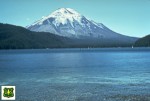
Before the devastating May 18, 1980 eruption, Mount St. Helens was considered to be one of the most beautiful and most frequently-climbed peaks in the Cascade Range. Spirit Lake was a vacation area offering hiking, camping, boating, and fishing.
USFS Photograph taken before May 18, 1980, by Jim Nieland, U.S. Forest Service, Mount St. Helens National Volcanic Monument.
[medium size] ... [large size] ... [This image pairs with a 1982 image]
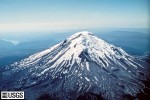
Aerial view of Mount St. Helens, taken from the northeast.
USGS Photograph taken before September 1964, by D.R. Mullineaux.
[medium size] ... [large size] ... [TIF Format, 15 M]
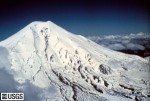
Aerial view of Mount St. Helens, taken from the southeast, looking at the Shoestring Glacier.
USGS Photograph taken May 1965, by D.R. Mullineaux.
[medium size] ... [large size] ... [TIF Format, 24 M]
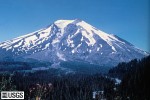
Southeast side of Mount St. Helens, showing Shoestring Glacier. This pre-1980 view of Mount St. Helens shows the volcano's southeast flank and the headwaters of the Muddy River before the 18 May 1980 eruption. The broad forested area in the foreground is underlain by many layers of volcanic deposits, chiefly lahars and pyroclastic flows generated from past eruptions of Mount St. Helens.
USGS Photograph taken before September 1970, by D.R. Mullineaux.
[medium size] ... [large size] ... [TIF Format, 15 M]
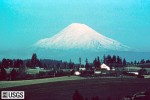
BEFORE: Mount St. Helens from the south, as seen from West Linn, Oregon. This image pairs with MSH80_st_helens_from_east_of_west_linn_1980_med.jpg.
USGS Photograph taken in 1977 by Ken Cameron.
[medium size] ... [large size] ... [TIF Format, 24 M]
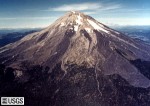
Aerial view of Mount St. Helens, taken from the southwest. Dark andesite flows of Kalama age include a lava-flow complex on the southeast flank of the volcano and single flows on the southwest flank. Dacite of the summit dome forms the slopes above the lava flows.
USGS Photograph taken 1979 by Rick Hoblitt.
[medium size] ... [large size] ... [TIF Format, 22 M]
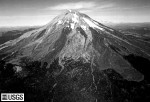
Aerial view of Mount St. Helens, taken from the southwest. Dark andesite flows of Kalama age include a lava-flow complex on the southeast flank of the volcano and single flows on the southwest flank. Dacite of the summit dome forms the slopes above the lava flows.
USGS Photograph taken 1979 by Rick Hoblitt.
[medium size] ... [large size, 16 M]
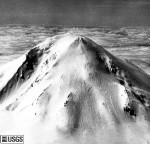
Aerial view, Mount St. Helens' summit. Image taken from USGS Professional Paper 1250, with caption: "Aerial view of upper cone, looking west-southwest. Although seismic activity began under Mount St. Helens on March 20, this overflight showed no unusual features except numerous tracks of earthquake-triggered snow avalanches. No evidence of fracturing of summit area was detected during careful visual observations on the afternoon of March 24, 1980. On March 25, the first cracks were noted by Bud Kimball, Tacoma, Washington.".
USGS Photograph taken on March 24, 1980, by David Frank.
[medium size] ... [large size] ... [TIF Format, 25 M]
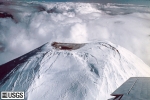
Mount St. Helens' eruption, first crater, from the north.
USGS Photograph taken on March 27, 1980, by David Frank.
[medium size] ... [large size] ... [TIF Format, 6 M]
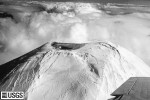
Mount St. Helens' eruption, first crater, from the north.
USGS Photograph taken on March 27, 1980, by David Frank.
[medium size] ... [large size] ... [TIF Format, 6 M]

Mount St. Helens' eruption, first crater. Aerial view on the afternoon of March 27 looking east, showing newly formed crater, swath of dark new ash mainly to the southeast of new crater, and east-west fault across middle of summit area, and an uplift or bulge on upper north flank of the volcano. Image is a portion of larger image.
USGS Photograph taken on March 27, 1980, by David Frank.
[medium size] ... [large size] ... [TIF Format, 14 M] ...
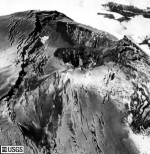
Mount St. Helens' summit after several small explosive eruptions. The smaller of the two pit craters was formed first on March 27. Subsequent eruptions opened the farther crater. The two craters subsequently merged. View looking west. Image from USGS Professional Paper 1250.
USGS Photograph taken on March 30, 1980, by Robert Krimmel.
[medium size] ... [large size] ... [TIF Format, 27 M] ... [TIF Format, 42 M]
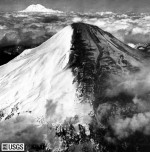
Aerial view of a two-tone Mount St. Helens with Mount Rainier in distance. View looking north-northeast. Ash covered snow is a result of wind direction, resulting in left portion of cone free of ash while the right portion is covered. Snowstorms later covered these ash layers, which in turn were covered by new ash. The result was many alternating layers of snow and ash. Image from USGS Professional Paper 1250.
USGS Photograph taken on March 30, 1980, by Robert Krimmel.
[medium size] ... [large size] ... [TIF Format, 27 M] ... [TIF Format, 42 M]

Ash-covered Mount St. Helens, view from the southwest.
USGS Photograph taken on March 30, 1980, by C.Dan Miller.
[medium size] ... [large size]

Mount St. Helens' summit, graben, crater, view from the northeast.
USGS Photograph taken on March 30, 1980, by C.Dan Miller.
Please note - hours have already been spent dust spotting and scratch fixing this image. More needs to be done. It may not be the best quality for printing.
[medium size] ... [large size]

Phreatic eruption, Mount St. Helens, view from the northwest.
USGS Photograph taken on March 30, 1980, by C.Dan Miller.
[medium size] ... [large size]
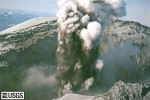
Steam-blast eruption from summit crater of Mount St. Helens. Aerial view, April 6, looking southwest, showing a roiling, gray-brown, ash-laden cloud that envelops and almost completely hides an initial fingerlike ash column, and an upper white cloud formed by atmospheric condensation of water vapor in the convectively rising top of the eruptive column. Image and caption taken from Professional Paper 1250 and not scanned from original slide.
USGS Photograph taken on April 6, 1980, by James G. Moore.
[medium size] ... [large size]
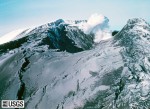
View west, of top of Mount St. Helens showing graben and new crater.
USGS Photograph taken on April 7, 1980, by Peter Lipman.
[medium size] ... [large size]
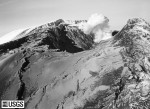
View west, of top of Mount St. Helens showing graben and new crater.
USGS Photograph taken on April 7, 1980, by Peter W. Lipman.
[medium size] ... [large size]
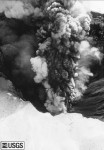
Early steam and ash eruption of Mount St. Helens.
USGS Photograph taken on April 7, 1980, by Peter W. Lipman.
[medium size] ... [large size]
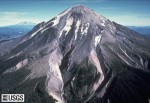
The smallest of five major volcanic peaks in Washington State was Mount St. Helens, with an elevation of 9,677 feet (2,950 meters) before the eruption of May 18, 1980. Another Cascade volcano, Mount Adams (12,286 feet [3,745 meters]), is in the distance. The view is from the west.
USGS Photograph taken on April 10, 1980, by Donald A. Swanson.
[medium size] ... [large size]
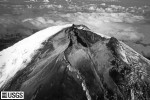
Aerial view, Mount St. Helens' summit crater.
USGS Photograph taken on April 10, 1980, by Tom Casadevall.
[medium size] ... [large size] ... [TIF Format, 24 M]
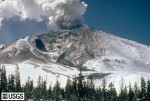
On March 20, 1980, after a quiet period of 123 years, earthquake activity once again began under Mount St. Helens volcano. Seven days later, on March 27, small phreatic (steam) explosions began. This view is from the northeast.
USGS Photograph taken on April 10, 1980, by Donald A. Swanson.
[medium size] ... [large size] ... [TIF Format, 18 M]
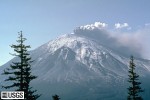
Small phreatic eruption of Mount St. Helens in the spring of 1980, before the May 18, 1980 blast.
USGS Photograph taken by the Cascades Volcano Observatory.
[medium size] ... [large size]
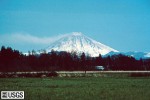
A steaming Mount St. Helens as seen from Interstate 5, at Chehelis, Washington.
This image pairs with MSH81_mount_st_helens_from_chehalis_02-28-81_med.jpg.
USGS Photograph taken on April 12, 1980, by Lyn Topinka.
[medium size] ... [large size] ... [TIF Format, 24 M]
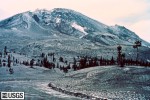
A "bulge" developed on the north side of Mount St. Helens as magma pushed up within the peak. Angle and slope-distance measurements to the bulge indicated it was growing at a rate of up to five feet (1.5 meters) per day. By May 17, part of the volcano's north side had been pushed upwards and outwards over 450 feet (135 meters). The view is from the northeast.
USGS Photograph taken on April 13, 1980, by Austin Post.
[medium size] ... [large size] ... [TIF Format, 24 M]
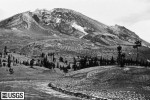
A "bulge" developed on the north side of Mount St. Helens as magma pushed up within the peak. Angle and slope-distance measurements to the bulge indicated it was growing at a rate of up to five feet (1.5 meters) per day. By May 17, part of the volcano's north side had been pushed upwards and outwards over 450 feet (135 meters). The view is from the northeast.
USGS Photograph taken on April 13, 1980, by Austin Post.
[medium size] ... [large size] ... [TIF Format, 24 M]
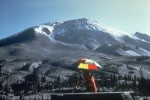
A "bulge" developed on the north side of Mount St. Helens as magma pushed up within the peak. Angle and slope-distance measurements to the bulge indicated it was growing at a rate of up to five feet (1.5 meters) per day. By May 17, part of the volcano's north side had been pushed upwards and outwards over 450 feet (135 meters). The view is from the northeast.
USGS Photograph taken on April 27, 1980, by Peter Lipman.
[medium size] ... [large size] ... [TIF Format, 18 M]

Aerial view of bulge on the north slope. Sugar Bowl on left (east) side of bulge and Goat Rocks on right (west) side.
USGS Photograph taken on May 3, 1980, by Robert Tilling.
[medium size] ... [large size] ... [TIF Format, 26 M]
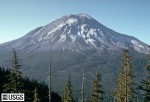
Mount St. Helens on May 17, 1980, one day before the devastating eruption. The view is from Johnston's Ridge, six miles (10 kilometers) northwest of the volcano.
USGS Photograph taken on May 17, 1980, by Harry Glicken.
[medium size] ... [large size] ... [This image pairs with later images]
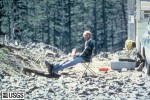
David Johnston at Coldwater II, at 1900 hours. Dave did not survive the next day's eruption. Coldwater II would eventually be re-named "Johnston Ridge" in honor of Dave.
USGS Photograph taken on May 17, 1980, by Harry Glicken.
[medium size] ... [large size] ... [TIF Format, 18 M]
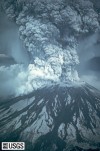
On May 18, 1980, at 8:32 a.m. Pacific Daylight Time, a magnitude 5.1 earthquake shook Mount St. Helens. The bulge and surrounding area slid away in a gigantic rockslide and debris avalanche, releasing pressure, and triggering a major pumice and ash eruption of the volcano. Thirteen-hundred feet (400 meters) of the peak collapsed or blew outwards. As a result, 24 square miles (62 square kilometers) of valley was filled by a debris avalanche, 250 square miles (650 square kilometers) of recreation, timber, and private lands were damaged by a lateral blast, and an estimated 200 million cubic yards (150 million cubic meters) of material was deposited directly by lahars (volcanic mudflows) into the river channels. Fifty-seven people were killed or are still missing.
USGS Photograph taken on May 18, 1980, by Austin Post.
[medium size] ... [large size] ... [TIF Format, 39.5 M]
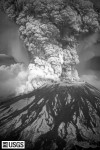
Eruption of Mount St. Helens.
USGS Photograph taken on May 18, 1980, by Austin Post.
[medium size] ... [large size] ... [TIF Format, 13.5 M]
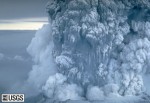
For more than nine hours a vigorous plume of ash erupted, eventually reaching 12 to 15 miles (20-25 kilometers) above sea level. The plume moved eastward at an average speed of 60 miles per hour (95 kilometers/hour), with ash reaching Idaho by noon. By early May 19, the devastating eruption was over. Shown here is a close-up view of the May 18 ash plume.
USGS Photograph taken on May 18, 1980, by Donald A. Swanson.
[medium size] ... [large size] ... [TIF Format, 18 M] ...
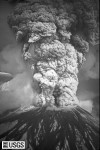
The eruption of May 18, 1980 sent volcanic ash, steam, water, and debris to a height of 60,000 feet. The mountain lost 1,300 feet of altitude and about 2/3 of a cubic mile of material stream downward from the center of the plume and the formation and movement of pyroclastic flows down the left flank of the volcano.
USGS Photograph taken on May 18, 1980, by Austin Post.
[medium size] ... [large size]
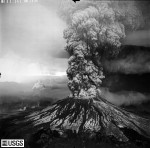
May 18, 1980 eruption of Mount St. Helens. Original negative is 9x9 black/white aerial.
USGS Photograph taken on May 18, 1980, by Robert Krimmel.
[medium size] ... [large size]
[Jpg Format, 8.3 M, approximately 7x7 inches, 2250x2222 pixels, 300dpi]
[TIF Format, 5 M, approximately 7x7 inches, 2250x2222 pixels, 300dpi]
[TIF Format, 20 M, approximately 15x15 inches, 4500x4443 pixels, 300dpi]
[TIF Format, 79 M, approximately 30x30 inches, 9000x8886 pixels, 300dpi]
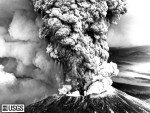
May 18, 1980 eruption of Mount St. Helens, Mount Adams is in the background (right). Original negative is 9x9 black/white aerial. Image scanned from print.
USGS Photograph taken on May 18, 1980, by Robert Krimmel.
[medium size] ... [large size] ...
[TIF Format, 20 M] ...
[TIF Format, 80 M, approximately 15x20 inches]

May 18, 1980 eruption of Mount St. Helens.
USGS Photograph taken on May 18, 1980, by Joseph Rosenbaum.
[medium size] ... [large size] ... [TIF Format, 38 M]
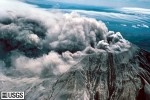
Day after the May 18, 1980 eruption of Mount St. Helens.
USGS Photograph taken on May 19, 1980, by Peter Lipman.
[medium size] ... [large size] ... [TIF Format, 24 M]
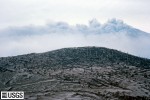
Day after the May 18, 1980 eruption of Mount St. Helens. View of denuded slope and blowdown timber, with a still steaming Mount St. Helens in the background.
USGS Photograph taken on May 19, 1980, by Peter Lipman.
[medium size] ... [large size] ... [TIF Format, 24 M]
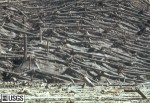
[Click]
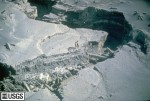
Smith Creek cutting new channel through the blast area.
USGS Photograph taken in September 1980, by Lyn Topinka.
[medium size] ... [large size]
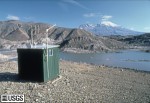
One major concern to people living downstream of Mount St. Helens was a breakout of any of the impounded lakes, such as Coldwater or Castle Lakes, due to the instability of the debris dams blocking them. Flood waters from a breakout could be more catastrophic than the lahars of May 18, 1980. Gages, such as this Early Warning Gage on Coldwater Lake, were installed at lakes and streams surrounding the volcano. These gages continuously monitored changes in water levels. Major increases or decreases in levels trigger warnings which are telemetered to the U.S. Geological Survey's Cascades Volcano Observatory in Vancouver.
USGS Photograph taken on October 1, 1982, by Lyn Topinka.
[medium size] ... [large size]
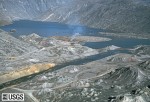
Outlet channels were built at Castle Lake and Coldwater Lake (shown here) to stabilize water levels and prevent overtopping of the debris dams.
USGS Photograph taken in October 17, 1981, by Lyn Topinka.
[medium size] ... [large size]

From late 1982 through the spring of 1985, a pump station operated at Spirit Lake to maintain that lake at a safe level. Without pumping, Spirit Lake was estimated to overtop its debris dam within a year.
USGS Photograph taken on September 23, 1983, by Lyn Topinka.
[medium size] ... [large size]
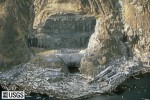
In the spring of 1985 a permanent tunnel was opened, allowing water to drain out of the Spirit Lake safely. This tunnel is 11 feet (3.4 meters) in diameter and more than 1.5 miles (2.5 kilometers) in length. The water level of Spirit Lake is now maintained at approximately 100 feet (30 meters) below the estimated overtopping level.
USGS Photograph taken on October 2, 1986, by Lyn Topinka.
[medium size] ... [large size]
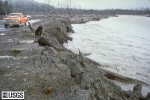
A major problem to people living downstream of Mount St. Helens was the high sedimentation rates resulting from stream erosion of the volcanic deposits. Streams were continuously down cutting channels, eroding their banks, and eating away at the avalanche and lahar deposits. This material was eventually transported downstream and deposited on the streambeds, decreasing the carrying capacity of the channels and increasing the chances of floods.
USGS Photograph taken on February 22, 1982, by Lyn Topinka.
[medium size] ... [large size]
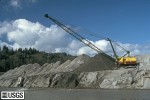
In order to remove the May 18, 1980 sediment deposits, and to keep up with new sedimentation, the U.S. Army Corps of Engineers began a dredging program on the Toutle (shown here), the Cowlitz, and the Columbia Rivers. By 1987, nearly 140 million cubic yards (110 million meters) of material had been removed from the channels. This is enough material to build twelve lanes of highway, one-foot thick, from New York to San Francisco.
USGS Photograph taken on February 5, 1981, by Lyn Topinka.
[medium size] ... [large size]
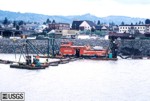
In order to remove the May 18, 1980 sediment deposits, and to keep up with new sedimentation, the U.S. Army Corps of Engineers began a dredging program on the Toutle, the Cowlitz (shown here), and the Columbia Rivers. By 1987, nearly 140 million cubic yards (110 million meters) of material had been removed from the channels. This is enough material to build twelve lanes of highway, one-foot thick, from New York to San Francisco.
USGS Photograph taken on March 22, 1981, by Lyn Topinka.
[medium size] ... [large size] ... [TIF Format, 27 M]
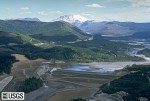
In the spring of 1987, construction of a sediment retention dam on the North Fork Toutle River began. This retention dam is designed to help stop the downstream movement of the sediment near where it begins - on the debris avalanche.
USGS Photograph taken in May 1989, by Steve Brantley.
[medium size] ... [large size]
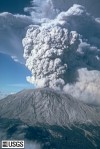
Five more explosive eruptions of Mount St. Helens occurred in 1980 (after May 18), including this spectacular event of July 22. This eruption sent pumice and ash 6 to 11 miles (10-18 kilometers) into the air, and was visible in Seattle, Washington, 100 miles (160 kilometers) to the north. The view here is from the south.
USGS Photograph taken on July 22, 1980, by Mike Doukas.
[medium size] ... [large size]
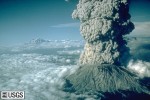
July 22, 1980 eruption of Mount St. Helens, with Mount Rainier, Washington, in the background.
USGS Photograph taken on July 22, 1980, by Jim Vallance.
[medium size] ... [large size]
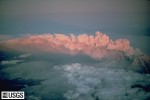
Sunset on the July 22, 1980 eruption of Mount St. Helens, as seen from the northwest.
USGS Photograph taken on July 22, 1980, by Jim Vallance.
[medium size] ... [large size]
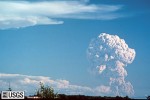
Mount St. Helens' July 22, 1980 eruption plume, as seen from Tacoma, Washington.
USGS Photograph taken on July 22, 1980, by Lyn Topinka.
[medium size] ... [large size] ... [TIF Format, 6 M]
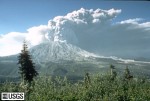
August 7, 1980, eruption of Mount St. Helens as seen from the south.
USGS Photograph taken on August 7, 1980, by C.Dan Miller.
[medium size] ... [large size]

August 7, 1980, eruption plume of Mount St. Helens, with emerging plume. (See next image)
USGS Photograph taken on August 7, 1980, by Lyn Topinka.
[medium size] ... [large size] ... [TIF Format, 15 M]
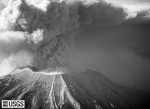
August 7, 1980, eruption of Mount St. Helens, with emerging plume. (See previous image)
USGS Photograph taken on August 7, 1980, by Lyn Topinka.
[medium size] ... [large size]
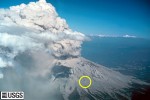
August 7, 1980, eruption plume of Mount St. Helens, with small aircraft (yellow circle) to give an idea of size.
USGS Photograph taken on August 7, 1980, by Lyn Topinka.
[medium size] ... [large size] ... [TIF Format, 15 M]
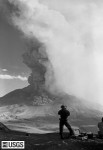
Beginning of pyroclastic flow from the August 7, 1980 eruption.
USGS Photograph taken on August 7, 1980, by Peter W. Lipman.
[medium size] ... [large size]
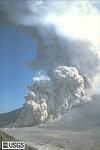
During the May 18, 1980 eruption, at least 17 separate pyroclastic flows descended the flanks of Mount St. Helens. Pyroclastic flows typically move at speeds of over 60 miles per hour (100 kilometers/hour) and reach temperatures of over 800 Degrees Fahrenheit (400 degrees Celsius). Photographed here, a pyroclastic flow from the August 7, 1980 eruption stretches from Mount St. Helens' crater to the valley floor below.
USGS Photograph taken on August 7, 1980, by Peter W. Lipman.
[medium size] ... [large size] ... [TIF Format, 18 M]
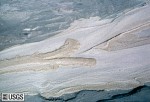
August 7, 1980 pyroclastic flow on top of July 22, 1980 pyroclastic flow.
USGS Photograph taken on September 30, 1980, by Lyn Topinka.
[medium size] ... [large size] ... [TIF Format, 24 M]
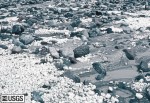
Pumice from the August 7, 1980 eruption, as seen at the Muddy Drop.
USGS Photograph taken on September 22, 1980, by Lyn Topinka.
[medium size] ... [large size]
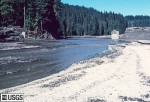
Remains of the bridge crossing the Muddy River, with pumice of August 7, 1980 eruption on the banks of the river.
USGS Photograph taken on September 23, 1980, by Lyn Topinka.
[medium size] ... [large size] ... [TIF Format, 25 M]

Mount St. Helens erupted often between 1980 and 1986. An explosive eruption on March 19, 1982, sent pumice and ash 9 miles (14 kilometers) into the air, and resulted in a lahar (the dark deposit on the snow) flowing from the crater into the North Fork Toutle River valley. Part of the lahar entered Spirit Lake (lower left corner) but most of the flow went west down the Toutle River, eventually reaching the Cowlitz River, 50 miles (80 kilometers) downstream.
USGS Photograph taken on March 21, 1982, by Tom Casadevall.
[medium size] ... [large size]

Before the devastating May 18, 1980 eruption, Mount St. Helens was considered to be one of the most beautiful and most frequently-climbed peaks in the Cascade Range. Spirit Lake was a vacation area offering hiking, camping, boating, and fishing.
USFS Photograph taken before May 18, 1980, by Jim Nieland, U.S. Forest Service, Mount St. Helens National Volcanic Monument.
[medium size] ... [large size]
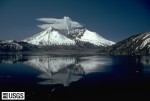
Mount St. Helens and the devastated area is now within the 110,000-acre Mount St. Helens National Volcanic Monument, under jurisdiction of the United States Forest Service. Visitor centers, interpretive areas, and trails are being established as thousands of tourists, students, and scientists visit the monument daily. Mount St. Helens is once again considered to be one of the most beautiful and interesting of the Cascade volcanic peaks.
USGS Photograph taken on May 19, 1982, by Lyn Topinka.
[medium size] ... [large size] ... [TIF Format, 18 M] ... [TIF Format, 48 M]

BEFORE: Mount St. Helens on May 17, 1980, one day before the devastating eruption. The view is from Johnston's Ridge, six miles (10 kilometers) northwest of the volcano.
USGS Photograph taken on May 17, 1980, by Harry Glicken.
[medium size] ... [large size]
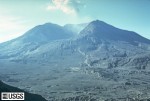
AFTER: Mount St. Helens soon after the May 18, 1980 eruption, as viewed from Johnston's Ridge.
USGS Photograph taken on September 10, 1980, by Harry Glicken.
[medium size] ... [large size]
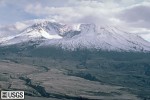
AFTER: Mount St. Helens four years after the May 18, 1980 eruption, again as viewed from Johnston's Ridge. Note the growth of the lava dome in the crater and the development of the drainage channels around the volcano's flanks.
USGS Photograph taken on September 24, 1984, by Lyn Topinka.
[medium size] ... [large size]

BEFORE: A steaming Mount St. Helens as seen from Interstate 5, at Chehelis, Washington.
USGS Photograph taken on April 12, 1980, by Lyn Topinka.
[medium size] ... [large size] ... [TIF Format, 24 M]
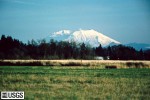
AFTER: A steaming Mount St. Helens as seen from Interstate 5, at Chehelis, Washington.
USGS Photograph taken on April 12, 1980, by Lyn Topinka.
[medium size] ... [large size] ... [TIF Format, 24 M]

BEFORE: Mount St. Helens from the south, as seen from West Linn, Oregon.
USGS Photograph taken in 1977 by Ken Cameron.
[medium size] ... [large size] ... [TIF Format, 24 M]
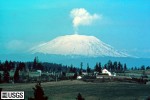
AFTER: Mount St. Helens from the south, as seen from West Linn, Oregon.
USGS Photograph taken in 1980 by Ken Cameron.
[medium size] ... [large size] ... [TIF Format, 24 M]
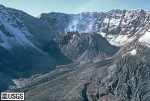
[Click]
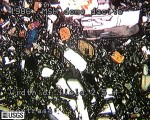
1986 - Augite-Hornblende-Hypersthene Dacite, 63.5 weight % SiO2.
- Hypersthene is the dominant mafic mineral, with accessory augite
- Distinctive hornblende reaction rims
- Large plagioclase phenocrysts with sieve-textured cores common
USGS Photograph by Carl Thornber and Mike Clynne.
[medium size] ... [large size]
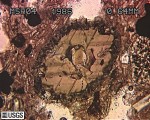
1986 - Hornblende in dome dacite.
USGS Photograph by Carl Thornber and Mike Clynne.
[medium size] ... [large size]
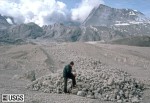
U.S. Geological Survey scientist examines pumice blocks at the edge of a pyroclastic flow from the May 18, 1980 eruption.
USGS Photograph taken on May 30, 1980, by Donald A. Swanson.
[medium size] ... [large size]

Beginning of pyroclastic flow from the August 7, 1980 eruption.
USGS Photograph taken on August 7, 1980, by Peter W. Lipman.
[medium size] ... [large size]

During the May 18, 1980 eruption, at least 17 separate pyroclastic flows descended the flanks of Mount St. Helens. Pyroclastic flows typically move at speeds of over 60 miles per hour (100 kilometers/hour) and reach temperatures of over 800 Degrees Fahrenheit (400 degrees Celsius). Photographed here, a pyroclastic flow from the August 7, 1980 eruption stretches from Mount St. Helens' crater to the valley floor below.
USGS Photograph taken on August 7, 1980, by Peter W. Lipman.
[medium size] ... [large size] ... [TIF Format, 18 M]

August 7, 1980 pyroclastic flow on top of July 22, 1980 pyroclastic flow.
USGS Photograph taken on September 30, 1980, by Lyn Topinka.
[medium size] ... [large size] ... [TIF Format, 24 M]
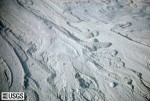
Aerial view of pyroclastic flows from crater of Mount St. Helens.
USGS Photograph taken on October 4, 1980, by Lyn Topinka.
[medium size] ... [large size] ... [TIF Format, 23 M]
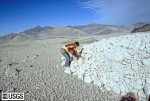
U.S. Geological Survey scientist examines pumice blocks at the toe of a pyroclastic flow.
USGS Photograph taken on October 17, 1980, by Terry Leighley, Sandia Labs.
[medium size] ... [large size] ... [TIF Format, 18 M]
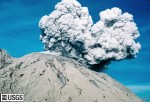
Steam and ash plume rises over Mount St. Helens' east crater rim. Shoestring Glacier is visible on the left.
USGS Photograph taken on October 10, 1980, by Lyn Topinka.
[medium size] ... [large size]
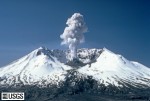
Plumes of steam, gas, and ash often occured at Mount St. Helens in the early 1980s. On clear days they could be seen from Portland, Oregon, 50 miles (81 kilometers) to the south. The plume photographed here rose nearly 3,000 feet (1,000 meters) above the volcano's rim. The view is from Harrys Ridge, five miles (8 kilometers) north of the mountain.
USGS Photograph taken on May 19, 1982, by Lyn Topinka.
[medium size] ... [large size] ... [TIF Format, 20 M] ...

Ash and steam plume at Mount St. Helens, as seen from the Pumice Plain.
USGS Photograph taken on April 4, 1983, by Pat Pringle.
[medium size] ... [large size]
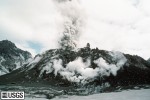
Small ash and steam plume from top of Mount St. Helens dome. View from the south crater floor.
USGS Photograph taken on April 29, 1983, by Lyn Topinka.
[medium size] ... [large size] ... [TIF Format, 24 M]
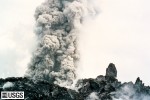
Closeup of small ash and steam plume from top of Mount St. Helens dome. View from the south crater floor.
USGS Photograph taken on April 29, 1983, by Lyn Topinka.
[medium size] ... [large size] ... [TIF Format, 24 M]
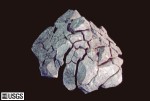
This dacite breadcrust bomb (about 15 centimeters in diameter) was erupted from the lava dome at Mount St. Helens, Washington.
USGS Photograph taken in March 1997 by David Wieprecht.
[medium size] ... [large size] ... [TIF Image, 18 M]

[Click]
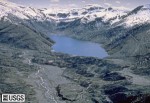
The May 18, 1980 debris avalanche from Mount St. Helens covered over 24 square miles (62 square kilometers) of the upper Toutle River valley and blocked tributaries of the North Fork Toutle River. New lakes such as Castle Lake (pictured here) and Coldwater Lake were created.
USGS Photograph taken in March 1984 by Robert L. Schuster.
[medium size] ... [large size]

Outlet channels were built at Castle Lake and Coldwater Lake (shown here) to stabilize water levels and prevent overtopping of the debris dams.
USGS Photograph taken in October 17, 1981, by Lyn Topinka.
[medium size] ... [large size]

One major concern to people living downstream of Mount St. Helens was a breakout of any of the impounded lakes, such as Coldwater or Castle Lakes, due to the instability of the debris dams blocking them. Flood waters from a breakout could be more catastrophic than the lahars of May 18, 1980. Gages, such as this Early Warning Gage on Coldwater Lake, were installed at lakes and streams surrounding the volcano. These gages continuously monitored changes in water levels. Major increases or decreases in levels trigger warnings which are telemetered to the U.S. Geological Survey's Cascades Volcano Observatory in Vancouver.
USGS Photograph taken on October 1, 1982, by Lyn Topinka.
[medium size] ... [large size]
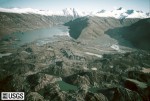
Debris Avalanche, looking at Coldwater Lake.
USGS Photograph taken in January 13, 1984.
[medium size] ... [large size]
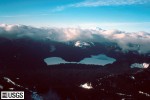
Spirit Lake before the big May 18, 1980, eruption of Mount St. Helenes. Another Cascade volcano, Mount Rainier (14,410 feet [4,392 meters]), is in the distance. The view is from the south.
USGS Photograph taken on April 10, 1980, by Pete Lipman.
[medium size] ... [large size] ... [TIF Format, 24 M]
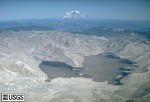
Spirit Lake, once surrounded by lush forest, is within the area devastated by blast. Remnants of the forest float on the surface of the lake. Another Cascade volcano, Mount Rainier (14,410 feet [4,392 meters]), is in the distance. The view is from the south.
USGS Photograph taken on October 4, 1980, by Lyn Topinka.
[medium size] ... [large size] ... [TIF Format, 18 M]
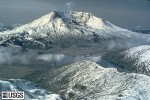
Aerial view of Mount St. Helens from the northeast, with log-covered Spirit Lake in the lower half. Harry's Ridge is ridge on the right.
USGS Photograph taken April 25, 1981, by Lyn Topinka.
[medium size] ... [large size] ... [TIF Format, 18 M] ...

USGS hydrologists (in boat, yellow circle) sample Spirit Lake for water quality, one year after the May 18, 1980 eruption of Mount St. Helens.
USGS Photograph taken on September 16, 1981, by Lyn Topinka.
[medium size] ... [large size] ... [TIF Format, 24 M]

Mount St. Helens and the devastated area is now within the 110,000-acre Mount St. Helens National Volcanic Monument, under jurisdiction of the United States Forest Service. Visitor centers, interpretive areas, and trails are being established as thousands of tourists, students, and scientists visit the monument daily. Mount St. Helens is once again considered to be one of the most beautiful and interesting of the Cascade volcanic peaks.
USGS Photograph taken on May 19, 1982, by Lyn Topinka.
[medium size] ... [large size] ... [TIF Format, 18 M] ... [TIF Format, 48 M]

From late 1982 through the spring of 1985, a pump station operated at Spirit Lake to maintain that lake at a safe level. Without pumping, Spirit Lake was estimated to overtop its debris dam within a year.
USGS Photograph taken on September 23, 1983, by Lyn Topinka.
[medium size] ... [large size]

In the spring of 1985 a permanent tunnel was opened, allowing water to drain out of the Spirit Lake safely. This tunnel is 11 feet (3.4 meters) in diameter and more than 1.5 miles (2.5 kilometers) in length. The water level of Spirit Lake is now maintained at approximately 100 feet (30 meters) below the estimated overtopping level.
USGS Photograph taken on October 2, 1986, by Lyn Topinka.
[medium size] ... [large size]
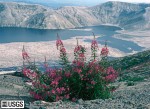
Fireweed with Spirit Lake in the background. View from Harrys Ridge.
USGS Photograph taken in September 4, 1984, by Lyn Topinka.
[medium size] ... [large size]
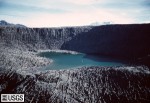
Aerial view, blowdown and Fawn Lake. Note Mount St. Helens in the background. Note too USGS scientists in small boat on the lake taking water samples.
USGS Photograph taken on October 28, 1980, by Lyn Topinka.
[medium size] ... [large size]
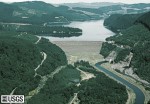
Aerial view, Swift Reservoir and Swift Dam.
USGS Photograph taken on June 22, 1984, by Lyn Topinka.
[medium size] ... [large size] ... [TIF Format, 24 M]
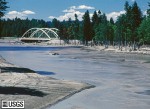
Toutle River, looking downstream towards the Interstate 5 bridge, from Old Pacific Highway bridge.
USGS Photograph taken July 6, 1980, by Lyn Topinka.
[medium size] ... [large size] ... [TIF Format, 24 M]
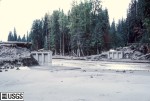
Remains of the bridge crossing the Muddy River.
USGS Photograph taken on September 23, 1980, by Lyn Topinka.
[medium size] ... [large size] ... [TIF Format, 25 M]
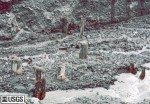
Exposed forest, Muddy Channel.
USGS Photograph taken on September 22, 1980, by Lyn Topinka.
[medium size] ... [large size] ... [TIF Format, 25 M]
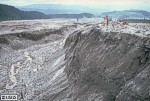
U.S. Geological Survey hydrologists measured changes in erosion along the stream channels affected by the May 18, 1980 eruption. These measurements were used to study the erosion processes and to estimate the severity of the sedimentation problem. The view here is along the Muddy River drainage, approximately one mile (1.5 kilometers) southeast of the volcano's base. Rod person (lower left) and instrument persons (upper right) give scale.
USGS Photograph taken on June 26, 1981, by Lyn Topinka.
[medium size] ... [large size]
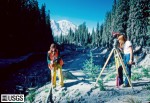
USGS hydrologists measure the cross section at Upper Pine Creek. Mount St. Helens steams in the background.
USGS Photograph taken on October 9, 1980, by Lyn Topinka.
[medium size] ... [large size]
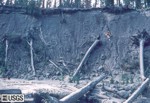
USGS hydrologist on rod at cross section along Pine Creek.
USGS Photograph taken on October 9, 1980, by Lyn Topinka.
[medium size] ... [large size] ... [TIF Format, 24 M]

In order to remove the May 18, 1980 sediment deposits, and to keep up with new sedimentation, the U.S. Army Corps of Engineers began a dredging program on the Toutle (shown here), the Cowlitz, and the Columbia Rivers. By 1987, nearly 140 million cubic yards (110 million meters) of material had been removed from the channels. This is enough material to build twelve lanes of highway, one-foot thick, from New York to San Francisco.
USGS Photograph taken on February 5, 1981, by Lyn Topinka.
[medium size] ... [large size]

A major problem to people living downstream of Mount St. Helens was the high sedimentation rates resulting from stream erosion of the volcanic deposits. Streams were continuously down cutting channels, eroding their banks, and eating away at the avalanche and lahar deposits. This material was eventually transported downstream and deposited on the streambeds, decreasing the carrying capacity of the channels and increasing the chances of floods.
USGS Photograph taken on February 22, 1982, by Lyn Topinka.
[medium size] ... [large size]

USGS hydrologists sample sediment moving down the Toutle River. View at Tower Road.
USGS Photograph taken on December 12, 1982, by Lyn Topinka.
[medium size] ... [large size]

In the spring of 1987, construction of a sediment retention dam on the North Fork Toutle River began. This retention dam is designed to help stop the downstream movement of the sediment near where it begins - on the debris avalanche.
USGS Photograph taken in May 1989, by Steve Brantley.
[medium size] ... [large size]
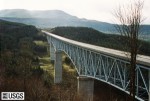
Washington Highway 504 bridge crossing Hoffstadt Creek.
USGS Photograph taken in April 1998 by Ed Klimasauskas.
[medium size] ... [large size]

View looking downstream from Upper Muddy. Compare with image below, showing channel erosion.
USGS Photograph taken on October 24, 1980, by Lyn Topinka.
[medium size] ... [large size] ... [TIF Format, 25 M]
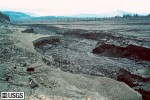
View looking downstream from Upper Muddy. Compare with image above, showing channel erosion.
USGS Photograph taken on October 10, 1981, by Lyn Topinka.
[medium size] ... [large size] ... [TIF Format, 25 M]
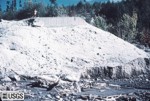
Remains of the bridge crossing the Pine Creek. Note USGS Hydrologist holding rod for cross section survey.
USGS Photograph taken on October 24, 1980, by Lyn Topinka.
[medium size] ... [large size] ... [TIF Format, 25 M]
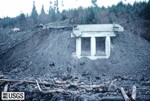
Remains of the bridge crossing the Pine Creek. The original bridge was taken out during the mudflows of May 18, 1980. The banks were further eroded during the first major floods of 1981. Compare with image above. Note USGS Hydrologist holding rod for cross section survey.
USGS Photograph taken on March 16, 1981, by Lyn Topinka.
[medium size] ... [large size] ... [TIF Format, 25 M]
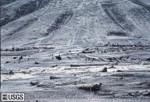
Denuded hillslope, upper Smith Creek.
USGS Photograph taken on September 28, 1980, by Holly Martinson.
[medium size] ... [large size] ... [TIF Format, 25 M]
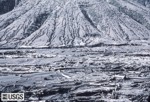
Denuded hillslope, upper Smith Creek, one year later.
USGS Photograph taken on September 30, 1981, by Lyn Topinka.
[medium size] ... [large size] ... [TIF Format, 25 M]
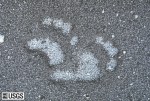
Animals also made a comeback soon after the May 18, 1980 eruption. Many smaller animals, such as gophers, mice, frogs, fish, and insects were hibernating below ground or under water on May 18, 1980, and they survived the blast. Larger animals such as bear (whose tracks are shown here), elk, deer, and coyotes have been moving back into the area as their food supplies increase. A mountain goat has even been spotted high on the flanks of the volcano.
USGS Photograph taken in October 1980, by Lyn Topinka.
[medium size] ... [large size] ... [TIF Format, 22 M]
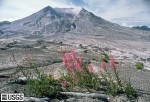
Fireweed is one species of plantlife which has returned to Mount St. Helens' devastated area. Vegetation began reappearing as early as the summer of 1980 as many small trees and plants were protected by the snowpack on May 18. Seeds, carried by the wind or by animals, also entered the area and grew. By 1985, the ridges surrounding the volcano were covered with new growth.
USGS Photograph taken in August 1984, by Lyn Topinka.
[medium size] ... [large size]

Fireweed with Spirit Lake in the background. View from Harrys Ridge.
USGS Photograph taken in September 4, 1984, by Lyn Topinka.
[medium size] ... [large size]
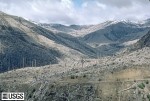
Smith Creek drainage looking north.
USGS Photograph taken in June 1986, by David Wieprecht.
[medium size] ... [large size]
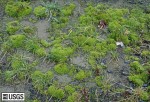
New growth in Smith Creek drainage.
USGS Photograph taken in June 1986, by David Wieprecht.
[medium size] ... [large size]
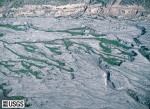
New growth, North Fork Toutle River drainage.
USGS Photograph taken in May 15, 1989, by Lyn Topinka.
[medium size] ... [large size]

Plumes of steam, gas, and ash often occured at Mount St. Helens in the early 1980s. On clear days they could be seen from Portland, Oregon, 50 miles (81 kilometers) to the south. The plume photographed here rose nearly 3,000 feet (1,000 meters) above the volcano's rim. The view is from Harrys Ridge, five miles (8 kilometers) north of the mountain.
USGS Photograph taken on May 19, 1982, by Lyn Topinka.
[medium size] ... [large size] ... [TIF Format, 20 M] ...
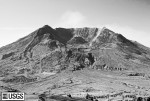
Mount St. Helens as seen from Harrys Ridge, 5 miles to the north.
USGS Photograph taken on September 1, 1982, by Lyn Topinka.
[medium size] ... [large size] ... [TIF Image, 15.5 M] ...
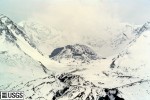
Mount St. Helens' crater, lava dome, and new lobe on the east, as seen from Harrys Ridge.
USGS Photograph taken on February 11, 1983, by Lyn Topinka.
[medium size] ... [large size] ... [TIF Format, 24 M]
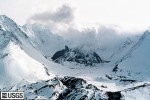
Mount St. Helens' crater, lava dome, and spine on new lobe on the east, as seen from Harrys Ridge.
USGS Photograph taken on March 2, 1983, by Lyn Topinka.
[medium size] ... [large size] ... [TIF Format, 24 M]
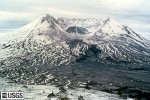
Mount St. Helens as seen from Harrys Ridge, 5 miles to the north.
USGS Photograph taken on January 9, 1984, by Lyn Topinka.
[medium size] ... [large size] ... [TIF Image, 24 M] ...
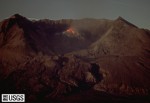
The last dome-building eruption of Mount St. Helens during the 1980s occurred in October 1986. A new lobe was extruded, increasing the dome's height to 925 feet (282 meters), making it taller than a 77-story building. In volume, the dome was nearly 40 times the size of Seattle's Kingdome stadium. In this 30-minute, moon-lit exposure, hot rock from the new lobe is seen glowing on top of the dome. The view is from Harrys Ridge, five miles (8 kilometers) north of the volcano.
USGS Photograph taken on October 22, 1986, by Lyn Topinka.
[medium size] ... [large size] ... [TIF Format, 19M]
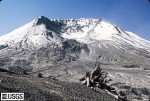
Mount St. Helens as seen from Harrys Ridge, 5 miles to the north.
USGS Photograph taken on May 6, 1987, by Lyn Topinka.
[medium size] ... [large size] ... [TIF Image, 25 M] ...
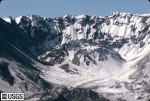
Mount St. Helens crater and dome as seen from Harrys Ridge, 5 miles to the north.
USGS Photograph taken on May 6, 1987, by Lyn Topinka.
[medium size] ... [large size] ... [TIF Image, 25 M] ...
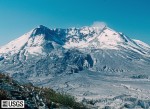
Mount St. Helens' crater and dome from Harrys Ridge.
USGS Photograph taken on May 15, 1989, by Lyn Topinka.
[medium size] ... [large size]
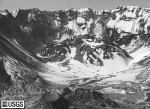
Mount St. Helens' crater and dome from Harrys Ridge.
USGS Photograph taken on May 15, 1989, by Lyn Topinka.
[medium size] ... [large size]

